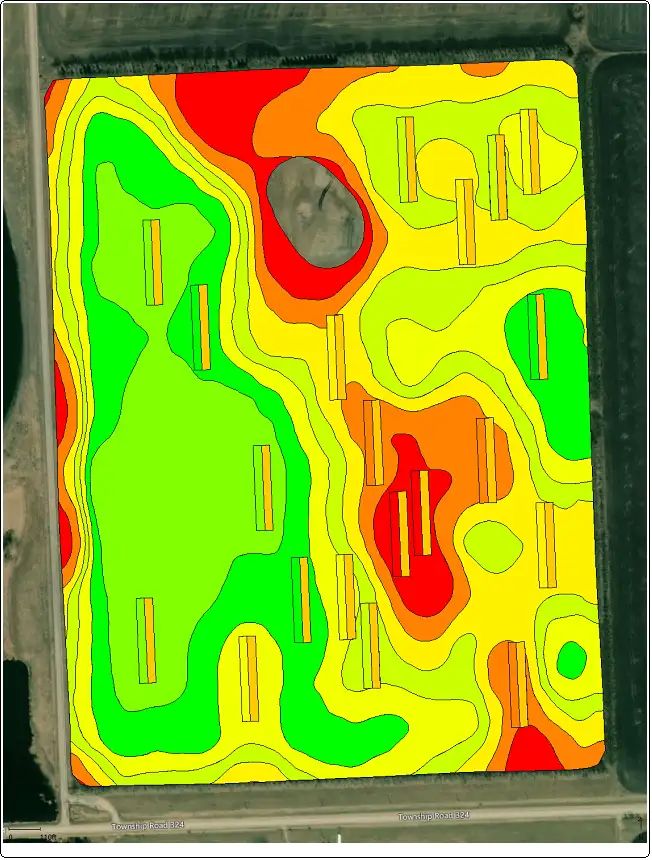 Olds College Centre for Innovation (OCCI) has partnered with Farm Credit Canada (FCC) on a research project focused on the Crown corporation’s AgExpert Field farm management software involving nutrient management practices.
Olds College Centre for Innovation (OCCI) has partnered with Farm Credit Canada (FCC) on a research project focused on the Crown corporation’s AgExpert Field farm management software involving nutrient management practices.
These are an important consideration for producers, ensuring they are following 4R nutrient stewardship practices. One way to ensure crops receive the right source of fertilizer, at the right time, at the right place, and at the right rate is through variable rate fertilizer application with seeding. In partnership with FCC, Olds College is evaluating their current management strategy of using Multiyear Normalized Difference Vegetation Index (NDVI) zones as one component to ensure farmers maximize their crop potential. NDVI is a measure of plant health and density calculated from satellite or drone imagery. Healthy, dense vegetation has a high NDVI value, while bare soil or unhealthy plants have low values.
Real-world data is being gathered from the Olds College Smart Farm (OCSF), which is a living laboratory for crop, livestock and agricultural technology research spread over 3,300 acres. Within field 15/16, which has been utilizing multi-year management zones for several years, researchers are testing the crop performance within a management zone. Normal operations (variable rate fertilizer) are being compared to a trial strip that has a status quo or flat rate prescribed amount of fertilizer within the same zone for a side-by-side comparison of yield. Researchers are also using this approach in the Smart Farm's Delong East field, which was removed from pasture in 2023 and included within the project's cultivated cropping practices. The OCCI team has developed Multiyear NDVI management zones and is testing if the management zones would benefit crop production.
Goals
- Evaluation of the current nutrient management practice in comparison to the status quo for yield and return on investment.
- Provide profit-loss maps (revenue minus seed, fertilizer, chemical, and crop insurance) for 2023 and 2024, with an assessment of input costs for variable rate and uniform rates.